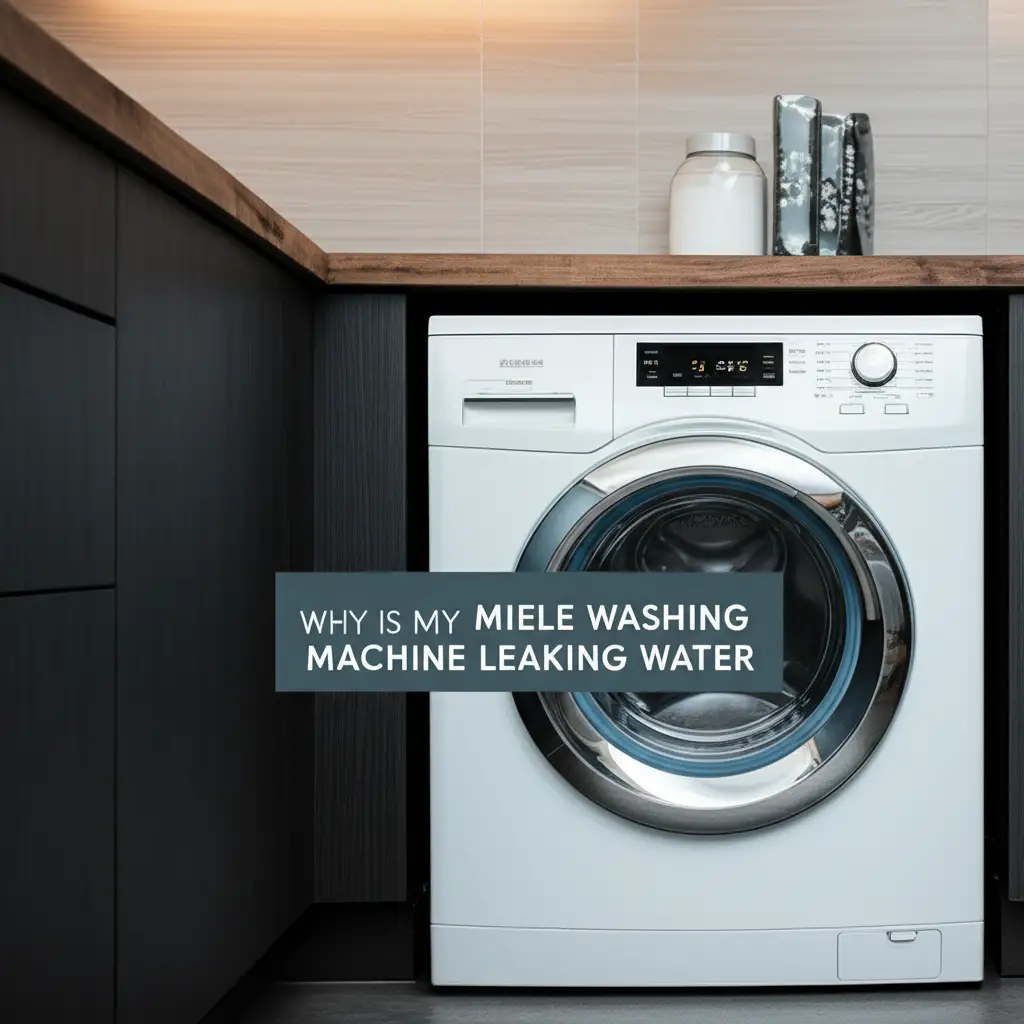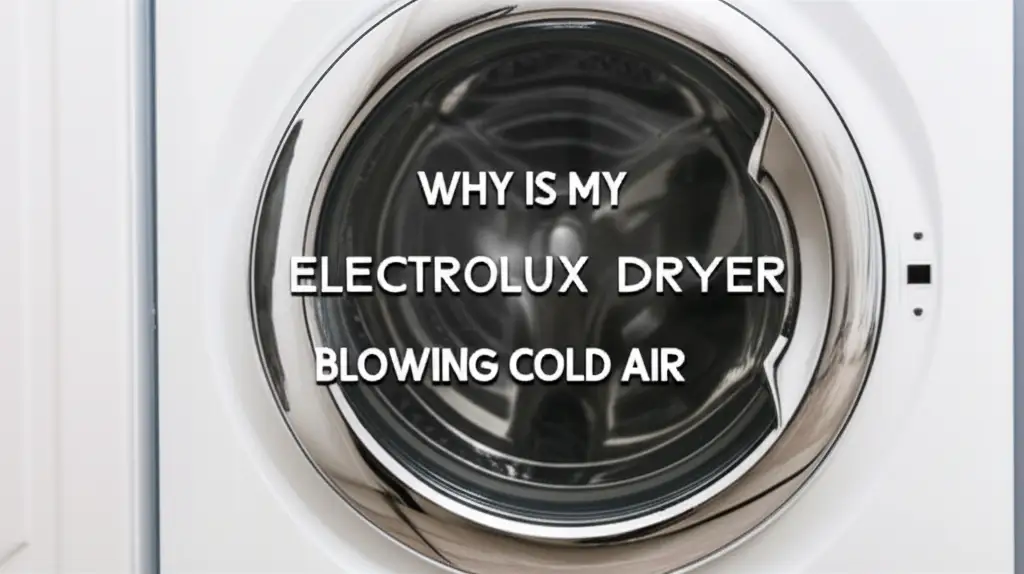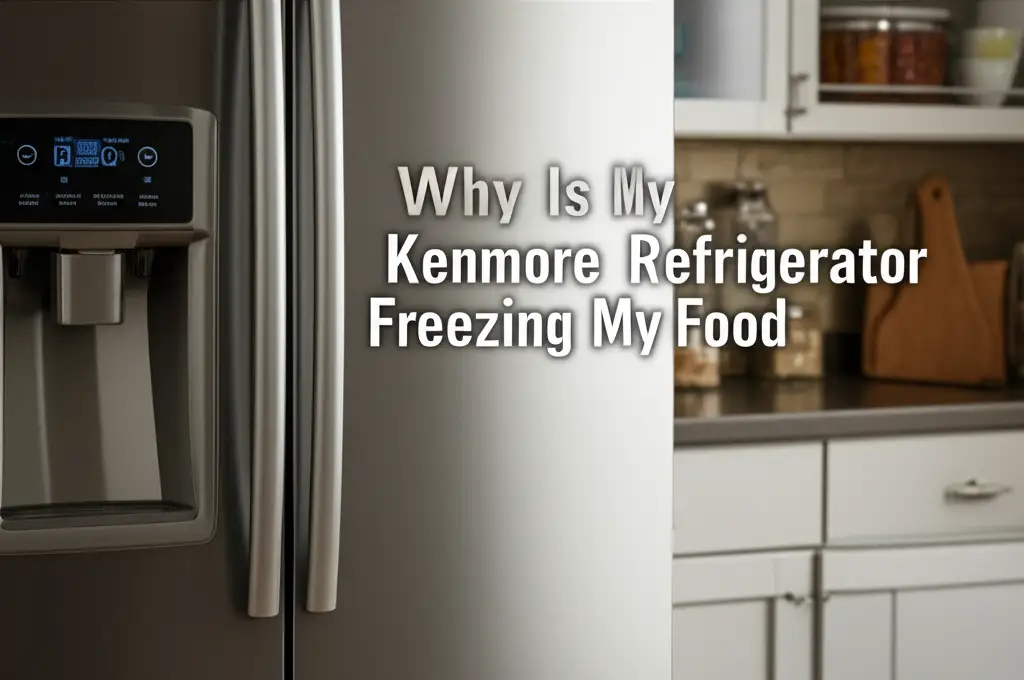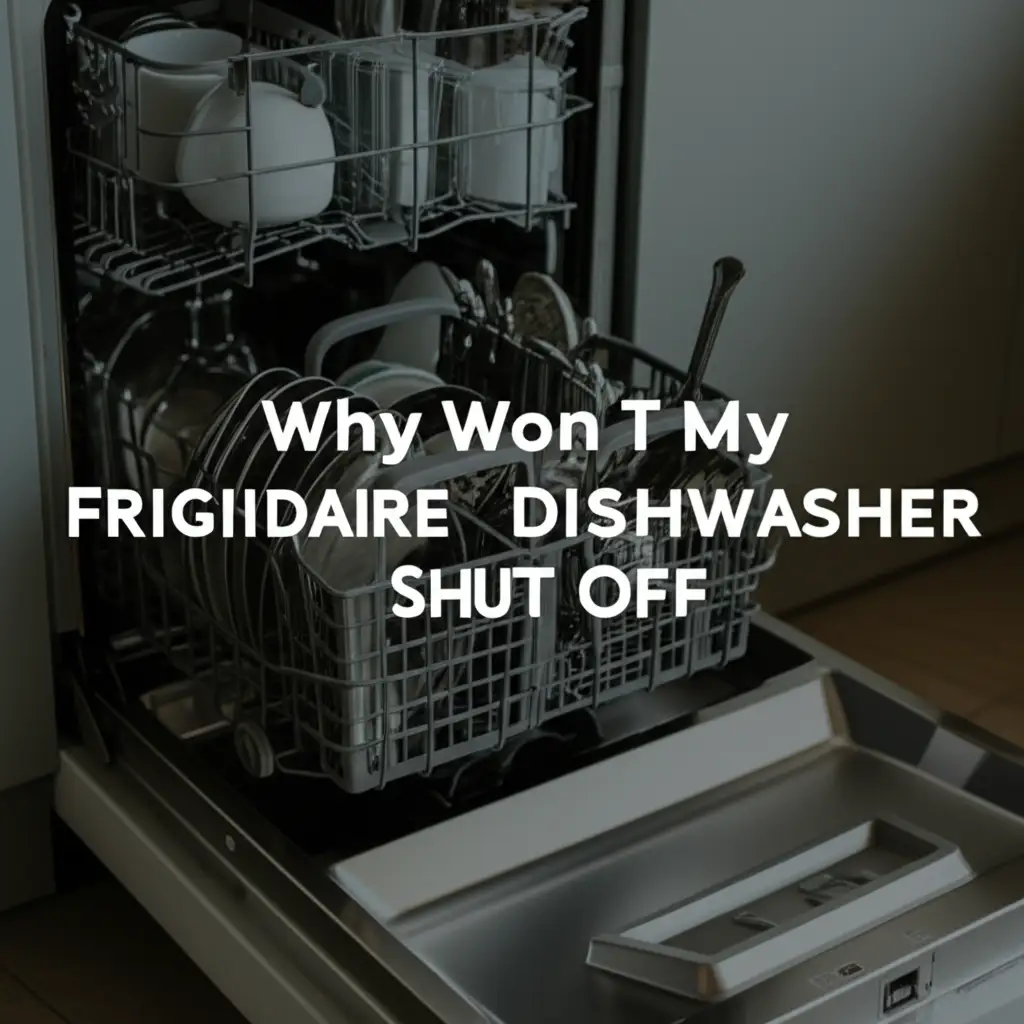· Katria Melrose · Appliance Repair · 11 min read
Why Is My French Door Refrigerator Not Cooling

Why Is My French Door Refrigerator Not Cooling? Practical Fixes
Walking into the kitchen to find your French door refrigerator not cooling is a moment no one enjoys. It immediately brings worries about spoiled food and costly repairs. A properly functioning refrigerator is essential for every home. When it stops cooling, finding the cause quickly becomes a priority.
This guide helps you understand why your French door refrigerator may stop cooling. We will explore common problems, from simple power issues to more complex component failures. My aim is to provide clear, actionable steps you can take to diagnose and fix the problem. By the end, you will feel more confident in tackling this common appliance issue.
Takeaway
- Check power, settings, and door seals first for quick fixes.
- Clean condenser coils regularly to maintain efficient cooling.
- Listen for fan noises; a quiet or noisy fan might indicate a motor issue.
- Look for ice buildup on evaporator coils, signaling a defrost problem.
- Complex issues like compressor or control board failures often need professional help.
Clear and Concise Answer
Your French door refrigerator may not be cooling due to issues like dirty condenser coils, a malfunctioning evaporator fan, a faulty defrost system, or damaged door seals. Less common causes include a bad compressor or a problematic control board. Basic checks often reveal simple fixes, but complex issues may require professional repair.
Initial Checks: Power, Settings, and Door Integrity
When your French door refrigerator is not cooling, start with the basics. Many issues have simple solutions. These first steps can save you time and money. I always begin here when a fridge acts up.
First, check the power supply. Make sure the refrigerator is plugged in firmly. Sometimes, a loose plug is all it takes. Also, check your home’s circuit breaker. A tripped breaker can cut power to the fridge. Reset it if it is off.
Next, look at the refrigerator’s temperature settings. Someone might have accidentally changed them. Verify that the temperature is set correctly, usually around 37-40°F (3-4°C) for the fridge and 0°F (-18°C) for the freezer. If the cooling off mode is active, it will stop cooling. If your Whirlpool refrigerator says cooling off, learn more here.
Finally, examine the door seals. French door refrigerators have two main doors. Check both seals carefully. Gaps or cracks in the seals let warm air in. This makes the refrigerator work harder to cool, or stop cooling altogether. You can test seals by closing the door on a dollar bill. If you can pull the bill out easily, the seal is weak. Replace any damaged seals to ensure proper temperature control.
Dirty Condenser Coils Affect Cooling Performance
Dirty condenser coils are a very common reason why a French door refrigerator stops cooling. These coils are like the lungs of your refrigerator. They release heat from the refrigerant. When coils get covered in dust and debris, they cannot dissipate heat effectively. This causes the refrigerator to work harder, leading to poor cooling.
You can usually find the condenser coils at the back or bottom of your refrigerator. Over time, pet hair, dust, and lint build up on them. This creates an insulating layer. If your refrigerator runs constantly but does not get cold, dirty coils are a likely culprit. I clean mine every six to twelve months.
To clean the coils, first unplug the refrigerator for safety. Use a vacuum cleaner with a brush attachment to remove dust. You can also use a coil brush to get into tight spaces. Be gentle to avoid damaging the coils. After cleaning, plug the refrigerator back in and give it several hours to cool down. Regular cleaning prevents many cooling problems. It also improves energy efficiency, saving you money on utility bills.
Evaporator Fan Motor Failure Causes Warm Fridge
The evaporator fan motor is crucial for cooling your French door refrigerator. This fan circulates cold air from the freezer section into the fresh food compartment. If the evaporator fan motor stops working, cold air cannot reach the fridge. This results in a warm refrigerator and possibly a freezer that is not freezing well either.
You might hear unusual noises from the freezer area if the fan is failing. Or, you might hear no noise at all when the compressor is running. Sometimes, ice buildup can obstruct the fan blades. This prevents the fan from spinning freely. If your French door refrigerator freezer is not freezing, or you notice excessive ice, this fan may be the problem. You can learn more about a Samsung French door refrigerator freezer not freezing here.
To check the evaporator fan, unplug the refrigerator. Remove the freezer back panel to access the fan. Look for ice or debris blocking the blades. If the fan blades are clear, try spinning them by hand. If they do not spin freely, the motor may be faulty. A qualified technician often handles replacement, as it involves electrical components and refrigerant lines.
Defrost System Issues Lead to Ice Buildup
A common cause for a French door refrigerator not cooling is a problem with its defrost system. Modern refrigerators have an automatic defrost system. This system prevents ice from building up on the evaporator coils. If ice forms on these coils, it acts as an insulator. This prevents the coils from absorbing heat, which stops the refrigerator from cooling.
The defrost system includes several components: a defrost heater, a defrost thermostat, and a defrost timer or control board. If any of these parts fail, ice accumulates. You might notice your Samsung French door refrigerator keeps icing up excessively. This ice often blocks airflow, leading to a warm fresh food compartment. You can usually see a thick layer of ice on the back panel of the freezer.
To diagnose, first unplug the appliance. Then, carefully remove the freezer’s back panel to see the evaporator coils. If they are covered in ice, you have a defrost issue. You can manually defrost the unit by unplugging it for 24-48 hours with the doors open. If the problem returns, a component in the defrost system is faulty. Replacing these parts often requires a professional, as it can be tricky.
Damaged Door Seals and Gaskets Compromise Cooling
The door seals, also known as gaskets, are vital for maintaining the internal temperature of your French door refrigerator. They create a tight seal when the doors are closed. This prevents warm ambient air from entering the refrigerator and cold air from escaping. If your refrigerator is not cooling, checking these seals is an important step.
Over time, refrigerator door seals can become brittle, cracked, torn, or simply lose their magnetic strength. This allows air leaks. A common sign of a weak seal is condensation forming around the door edges. You might also feel warm air escaping when you touch the seal. Even small gaps can significantly impact cooling efficiency. Warm air forces the compressor to run more often, leading to higher energy bills and eventually a warmer fridge interior.
To check your door seals, perform the dollar bill test mentioned earlier. Close a dollar bill in the door and try to pull it out. If it slides out easily, the seal is weak at that spot. Inspect the entire perimeter of both French doors. Clean the seals with warm, soapy water to remove any sticky residues that might prevent a good seal. If seals are damaged, they must be replaced. This is a common DIY fix that can restore proper cooling.
Compressor and Start Relay Problems Impact Cooling
The compressor is the heart of your French door refrigerator’s cooling system. It pumps refrigerant through the coils, which removes heat from the inside of the fridge. If the compressor fails, your refrigerator will not cool at all. You will likely hear no humming sound from the back of the fridge. This is a more serious issue than dirty coils or a bad door seal.
Sometimes, the compressor itself is not the problem, but its start relay is. The start relay provides a jolt of electricity to get the compressor running. If the relay is faulty, the compressor will not start. You might hear a clicking sound every few minutes as the relay tries and fails to activate the compressor. A common sign of a failing compressor or start relay is a completely warm refrigerator, despite everything else seeming normal.
Diagnosing a compressor or start relay issue is complex. It often involves specialized tools and knowledge of refrigeration systems. Testing the start relay can be done with a multimeter, but only if you are comfortable with electrical work. For example, troubleshooting a Frigidaire refrigerator not cooling or freezing might involve checking these components. If you suspect a compressor or start relay problem, it is best to contact a certified appliance technician. These repairs are usually costly, but sometimes necessary.
Control Board and Thermistor Malfunctions
Modern French door refrigerators rely heavily on electronic control boards and sensors like the thermistor. These components manage and monitor the refrigerator’s temperature and various functions. If either the control board or the thermistor malfunctions, your refrigerator’s cooling system can go haywire. It might not cool, or it might cool too much.
The control board acts as the brain of the refrigerator. It receives signals from sensors and sends commands to parts like the compressor and fans. A faulty control board can send incorrect signals, causing cooling issues. For example, it might not activate the compressor when needed, or it could stop the defrost cycle. You might need to reset a Whirlpool French door refrigerator control board if you suspect a glitch.
The thermistor is a temperature sensor. It tells the control board how cold the refrigerator is. If the thermistor gives inaccurate readings, the control board will not regulate the temperature correctly. It might think the fridge is cold enough when it is not, or vice versa. This leads to the refrigerator not cooling properly. Diagnosing these issues usually requires a technician with diagnostic tools. Replacing a control board or thermistor can be an involved process.
Frequently Asked Questions (FAQ)
What is the most common reason a French door refrigerator stops cooling?
The most common reason for a French door refrigerator to stop cooling is dirty condenser coils. These coils release heat from the refrigerant. When they are covered in dust and debris, heat cannot escape. This makes the refrigerator struggle to maintain cold temperatures, leading to a warm interior. Cleaning them often resolves the issue.
Can a full refrigerator cause cooling problems?
Yes, a refrigerator that is too full can cause cooling problems. Overfilling blocks the vents that circulate cold air. This prevents cold air from reaching all areas of the fresh food compartment. It is important to leave space for air to move freely around your items. Proper air circulation helps maintain an even temperature.
How long does it take for a French door refrigerator to get cold after being plugged in?
After being plugged in or after a power outage, a French door refrigerator typically takes 12-24 hours to reach its set temperature. This initial cool-down period allows the compressor and cooling system to stabilize. Avoid placing large amounts of warm food inside during this time. Give it ample time to get properly cold.
Is it normal for my French door refrigerator to make clicking noises and not cool?
Clicking noises followed by a lack of cooling often point to a problem with the compressor’s start relay. The start relay tries to activate the compressor, but fails. This repeatedly causes the clicking sound. A faulty start relay or a failing compressor can prevent the refrigerator from cooling properly. Professional diagnosis is usually needed.
Should I call a technician for my French door refrigerator not cooling?
You should call a technician if basic troubleshooting steps do not resolve the cooling issue. If you have checked power, cleaned coils, ensured door seals are intact, and the refrigerator still does not cool, it is time for professional help. Issues like a faulty compressor, evaporator fan motor, or control board require expert repair.
Why is my French door refrigerator warm but the freezer is cold?
If your French door refrigerator is warm but the freezer is cold, it often indicates a problem with the evaporator fan motor or the defrost system. The evaporator fan circulates cold air from the freezer to the fridge. If it fails, cold air does not reach the fridge. Ice buildup on evaporator coils also blocks airflow, causing only the freezer to remain cold.
Conclusion
Finding your French door refrigerator not cooling can be frustrating. However, many issues have straightforward solutions. Start with simple checks like power, temperature settings, and door seals. Often, a good cleaning of the condenser coils can restore proper function. If these steps do not help, look into the evaporator fan, defrost system, or consider professional assistance for more complex component failures like the compressor or control board.
Taking these diagnostic steps helps you pinpoint the problem. You might save time and money by fixing it yourself. If the issue is complex, you will know when to call a qualified appliance technician. Always prioritize safety by unplugging the unit before inspecting or cleaning parts. Keep your French door refrigerator running efficiently. Regular maintenance helps prevent future cooling problems.
- French door refrigerator not cooling
- Refrigerator cooling problems
- Fridge repair
- Appliance troubleshooting





